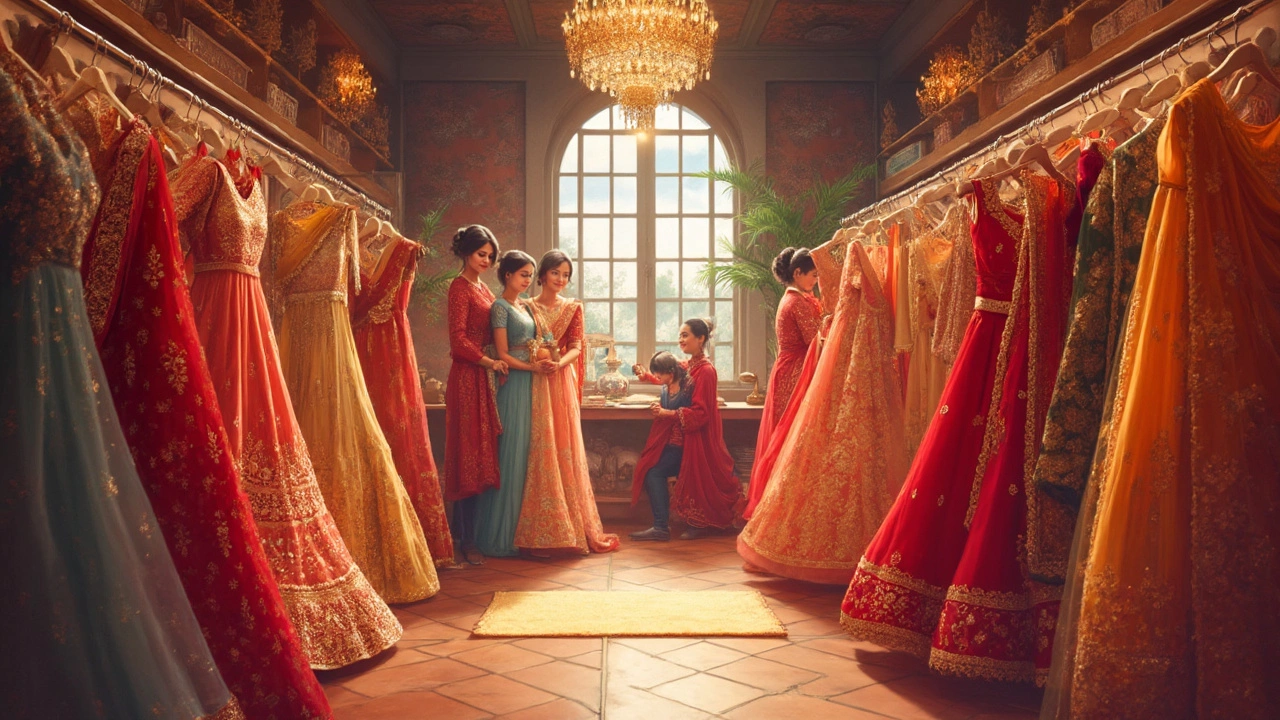Bridal Dress: Trends, Tips & Budget Insights
When talking about Bridal Dress, the centerpiece garment worn by a bride on her wedding day, often made of silk, lace, or tulle, and ranging from classic ballgowns to sleek minimal silhouettes. Also known as wedding gown, it sets the tone for the entire celebration. A well‑chosen bridal dress influences the wedding color palette, dictates budget priorities, and even guides the groom’s attire choices.
Key Factors to Consider
First, think about your Wedding Budget, the total amount you plan to spend on all wedding elements, from venue to photography, often broken down by category. Knowing how much you can allocate to the gown prevents heartbreak later. For many couples, the dress consumes 10‑15% of the overall budget, so budgeting early helps you balance the look you want with what you can afford.
Next, explore the Wedding Color Palette, the coordinated set of hues chosen for décor, flowers, attire and stationery that creates a visual theme for the day. Your dress’s fabric and embellishments should echo those colors – a blush satin gown pairs nicely with pastel roses, while a deep navy dress can anchor a bold jewel‑tone scheme. Aligning the dress with the palette creates harmony and makes styling accessories easier.
Don’t forget the Wedding Photographer, the professional who captures every moment of the ceremony and reception, offering packages that often include editing and album design. Discuss your dress’s texture and movement with the photographer; they’ll advise on lighting and angles that highlight lace details or flowing skirts, ensuring the final images do justice to your chosen style.
The groom’s look is another piece of the puzzle. A classic rule says the groom’s suit should complement the bride’s dress without matching exactly. For instance, a satin‑trimmed veil might inspire a subtle satin lapel on the groom’s jacket. Coordinating these elements creates a cohesive visual story that feels intentional rather than forced.
Style trends evolve, but the core attributes of a bridal dress remain: silhouette, fabric, and price range. Silhouettes like A‑line, mermaid, and sheath each flatter different body types. Fabrics range from breathable organza for outdoor ceremonies to heavier satin for winter weddings. Price varies widely – a simple off‑the‑rack dress might cost under $1,000, while a designer custom piece can exceed $10,000. Knowing these attributes helps you compare options quickly.
When you shop, keep three semantic connections in mind: the bridal dress encompasses the wedding color palette; choosing a bridal dress requires a realistic wedding budget; and the style of the bridal dress influences the groom’s attire. These connections guide you to make decisions that keep the entire event in sync.
Finally, remember the timeline. Most brides order their dress 6‑9 months before the big day to allow fittings and alterations. If you’re on a tight schedule, look for ready‑to‑wear options that still offer customization. Early planning also gives you leeway to adjust the budget if you decide to splurge on extra embellishments or upgrade your photographer’s package.
Below you’ll find a curated list of articles that dive deeper into each of these areas – from budgeting hacks and color‑palette ideas to photographer selection tips and groom outfit inspiration. Use the collection to fine‑tune your plan and walk down the aisle feeling confident about every detail.
Ever wonder why so many brides splurge on expensive wedding dresses? This article digs into the reasons behind the price tag—from cultural traditions to social media pressure. You'll find interesting facts about what's actually driving those costs. Plus, get tips for making smart decisions when it comes to your own bridal shopping. If you're curious about what goes into picking that dream dress, this is for you.
